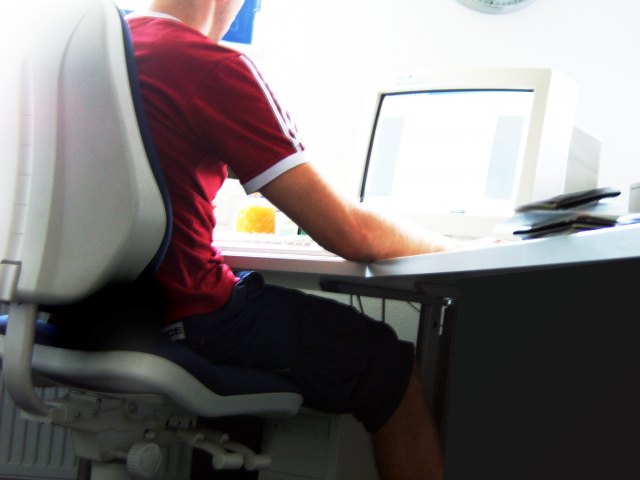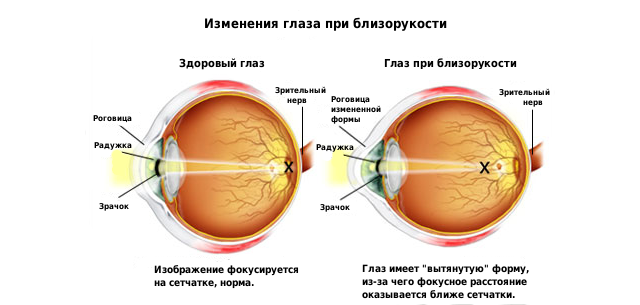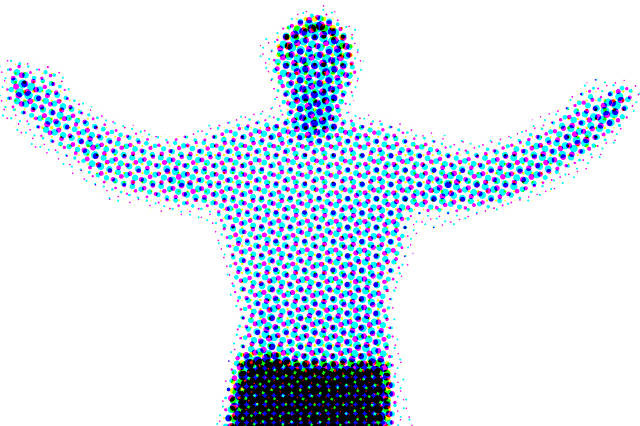How to maintain health while working at the computer?

Do you care about your health?
For me personally, the ability to freely organize working hours was the main argument “for” when I decided to leave the office and join the freelancers. During the years spent in the company, I achieved many goals that were interesting to me, paying for it with my eyesight, posture and time spent. The main lesson I learned from this was that the success achieved due to the deteriorated health was not worth the effort. Having transferred most of my work home, I set the task of organizing the time spent at the computer, so as to reduce its impact on health to a minimum.
What was not easy. In this article I will talk about my way of organizing the "right" working day, about what should be done to do this, and where the rakes lie that cannot be stepped on. The theme “computer and health” has already been raised several times on Habré, so I conceived this post as an article that can be bookmarked and used as a “guide to action”.
')
Why do you need it?
First of all, it is necessary for ourselves. It would be a great naivete to think that one can sit in front of the monitor for a long time with impunity for health. For everything, sooner or later, you have to pay. First of all, vision suffers. Health is our main value, so one day you wake up and realize that you definitely need to save it, and not for the next three days, spent in the office without sleep and rest (“the customer is in a hurry”!), But for the family and children. This is a great sobering. I think there are only two cases in which the question of health may not be important to you. The first is that you are developing something so great that you are ready to sacrifice yourself (important note: electronic banking systems and online media are not included in the category of “great”), secondly, you are the Terminator. OK, if you are a Terminator, there is really nothing to worry about, but in other cases you should take care of yourself.
In addition, it is necessary for your projects. The human body is designed in such a way that short distances are better than long ones, and the mode of work, in which the main occupation is interrupted by “pauses” of rest, is more effective. Simply put, working with breaks, you are able to do more than working "tirelessly", but with a long rest after.
Each of us is familiar with the situation when, being distracted from the project for a while, you return to it again and easily do what you were going to spend a lot of time on. Thoughts appear better “fresh-headed”, and something similar happens at all physiological levels. Of course, this approach requires self-organization skills, and I will definitely write about them later. I will also make a reservation: all the tips will apply to your home computer (home office), since it is easiest to organize something at home.
So, enough talk, we begin to act!

My table is my castle
First of all let's take care of the lighting. It is better if it is artificial. Sunlight, of course, is good, but very unstable and gives glare; therefore, the ideal room would be a spacious bright room where the computer is located far from the window. If this is not possible, try experimenting and choose the right place yourself; but remember that in general, the excess light is better than its flaw, the lamp is better positioned on the left, and the fluorescent lights may flicker, which is not good.
Findings:
- Do not be afraid to experiment with lighting, select it for the greatest comfort for the eyes.
- An excess of light is better than a disadvantage.
In addition, remember that you can not sit in front of a working monitor in a dark room! Our eye in such a situation is forced to cope with a very contrasting “picture”: the bright screen in the center is surrounded by a dark “background” (the interior of the room), which leads to an overstressing of the eye muscles. When working at a computer in the evening and at night, be sure to turn on the lights in the room!
There should be enough free space on the table. Remove all unnecessary items so that they do not distract you. To reduce muscle tension, hands should fit on the surface of the table, and not hang in front of it. Try to have as much free space as possible, and if for an inexplicable reason you like to keep dog food and a spade from a shovel next to the monitor, try to put them so that they do not interfere.
- Free up space on the computer desk as much as possible. This will avoid a number of distractions, and yet it is just convenient.
How to "make friends" eyes with a monitor?
Without going into details, you can distinguish 3 rules for the preservation of vision during prolonged work at the computer:
- Take a short break every half hour.
- Try to do exercises for the eyes - they really help.
- Adjust the monitor so that its brightness and contrast are comfortable for your view.
Consider each rule in more detail.
Give your eyes a break! The most appropriate solution seems to me to take three-minute breaks every half hour. Spend a few minutes on any activity that is not associated with visual tension: get up, take a walk, chat with homeworkers, or just go to the window and look into the distance. In a few minutes you will feel how your eyes relax, and then return to work with new forces!
Break time can be spent on eye exercises. Many have heard about them, but not everyone understands how they work and why they are needed. I will try to explain it.

The fact is that the human eye is not historically adapted for reading, working at a computer and other intensive workload. Most of the time of the existence of Homo sapiens, the vision was used by man for orientation in space, distinguishing "his" from "alien", recognizing edible herbs and fruits, interacting during collective hunting, making simple labor tools, etc. Virtually none of these states did not provide for a long look at the same point, and besides - luminous. Using the system inappropriately increases the risk of its failure in any technique, and about the same happens with the human eye.
A long look at the monitor leads to the overstressing of some eye muscles and weakening the function of others. There is an imbalance between the muscles that "stretch" the eye, changing its shape. Because of this, the focal length ceases to correspond to the distance to the retina, and vision deteriorates. The eyeball of myopic people is more convex, which is clearly noticeable even without special devices: watch people in public transport. Properly selected set of exercises will allow you to relax overstressed muscles and “pump up” weakened, which will return the normal form to the eye. With a weak myopia (the most common illness of computer scientists), this way you can restore your vision completely.
Since it is a matter of muscle development when performing eye exercises, systematicity and regularity are important in this matter. There are many different techniques, but for a simple eye relaxation is usually enough a series of 5 exercises:
- Close your eyes tightly for 3 seconds, then open for 3 seconds. Repeat 5 times.
- Blink quickly for 30-60 seconds.
- Gently massage your eyes through closed eyelids with circular movements of the index fingers for 30 seconds.
- Consistently alternate the view on a close object and a look into the distance. This important exercise trains the accommodative muscle.
- After this, repeat the eye massage through the eyelids.
Try to do these exercises 2-4 times daily, but do not overdo it: your eyes do not need excessive loads.
At the very beginning of the article, I promised to tell about the “rake placed”, the time has come! Exercises for the eyes - the same load on the organ of vision, as well as a close look at the monitor, so you should start to do them carefully and with healthy enthusiasm. Do not repeat my attempt to do the exercises every half hour, if you do not want to earn reactive conjunctivitis (inflammation of the eye shell from overstrain)! Unpleasant situation.
For people with a strong degree of myopia, there are more complex sets of exercises; Ophthalmologists often recommend the complex according to Avetisov .
I suggest you not to postpone the case and right now get up from the computer and do 5 exercises for the eyes listed above. For convenience, I prepared a simple file with their text, which is easy to print.

Did you do it? Well done! Then, as a reward, I will tell you a story about the monitor and cacti that happened in one of my first works. It was an organization that had nothing to do with IT, but used computers to “type / print”. Both cars gazed at the world with 15-inch CRT monitors, and we all smiled a friendly smile in response. Idyll ended in one day, when the head. department came to work with two pots of cacti. It turned out that they were sold to him on the market by some smart businessman who at the same time described all the horrors of radiation from the monitors. According to the assurances of the seller, only a single rare species of cactus could save the situation, and it was this species that he offered on the counter. The head put the cacti on the monitors and with a view of the man who just saved the world, said: "They absorb radiation and from this they grow very quickly ... So we will see if there is any radiation here." Everyone laughed and forgot about it. However, after a few days, it became clear that the cacti became larger. The preoccupation quickly gave way to anxiety: they grew, no, ROSLI, moreover, with a completely unbelievable speed! After the weekend, the situation became tense almost to the limit: the morning shift, not believing their eyes, saw on the monitors two HUGE cactus, which in less than a week after the purchase grew 10 times that way. . Someone remembered that the dosimeter was at home, and promised to bring it. However, the dosimeter was not required. As it turned out, the cleaning lady, watering the flowers, gathered them together so as not to carry water, and then set them back. All the plates were the same, and it turned out that every time she mistakenly returned to the monitors are not those cacti, but cacti from other cabinets, similar, but larger in size. It was fun! And the “usefulness” of cacti has not yet been proven, so I advise you not to bother with pseudoscientific tales, but to do something more useful. For example, do exercises!
Computer, muscle fatigue and posture
Work as a programmer, alas, involves a sedentary lifestyle. The solution here is to move! This will allow to avoid a number of serious diseases associated with immobility.
- To prevent hand fatigue, use a comfortable mouse and keyboard. It does not necessarily have to be expensive ergonomic models, just enough that they are comfortable for you.
- Keep your back straight. Is always.
- During your half-hour breaks (see recommendations on vision) try to move more.
There are many techniques, such as this . If for some reason you don’t like it, you can remember school exercises, it’s quite suitable.
In order to convince you of the importance of such exercises, I will mention a couple of diseases that can be caused by sitting in front of a computer for a long time. The first is “tunnel syndrome”. This is a specific disease of the hands, in which they experience persistent severe pain due to disorders along the nerve. Prevention - use a convenient keyboard. The second disease is, sorry, prostatitis. With prolonged sitting, blood stagnation begins in the veins of the pelvis, which does not lead to anything good. So move, men, move!
As with eye exercises, regularity is important here. If you work at home - in the intervals between working at a computer, get up from the table and switch to another occupation, to talking with your family. If you are in an office, go eat out, discuss something with colleagues. Spend more time on your feet, even when it is not necessary!

Instead of conclusion
In matters of maintaining health at the computer, there are other factors that, alas, can not be developed exercises. And the most significant of them relates to psychology - a sense of satisfaction from the work that you do. If you do not like your current occupation, then there are only two options: make it interesting or find another job. You have no third option (“calm down and quietly complain about life”). It should not be; because changing one's life is a natural human need, not a simple desire. I thought so when I was 15, I think so now. Find your motto and follow it through life.
Everything I wrote about above is fairly easy to implement. On the Internet there is a lot of information on this topic. These rules and exercises will take you 10-20 minutes a day, but after years, on the threshold of old age, these few minutes will return to you in the form of several “extra” years of active and healthy life. Perhaps this is one of the most favorable deposit terms in the world, with one of the highest percentages imaginable. Here you are both a client and a banker.
Make this deal with you?
Source: https://habr.com/ru/post/117589/
All Articles